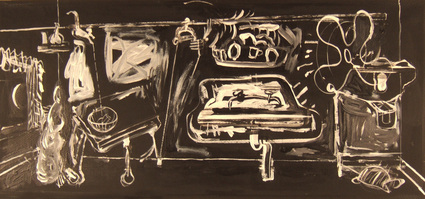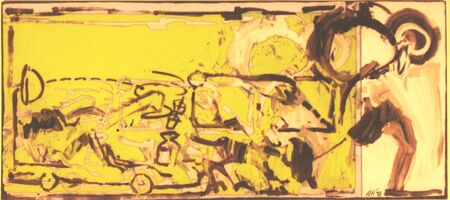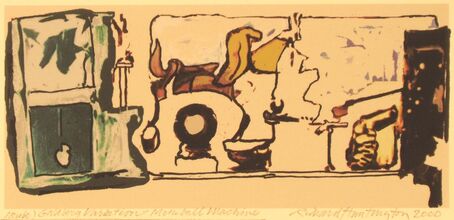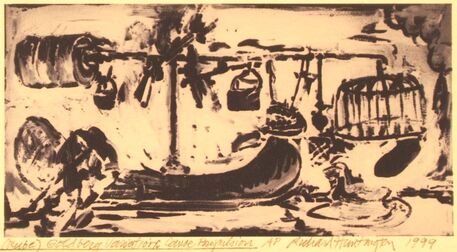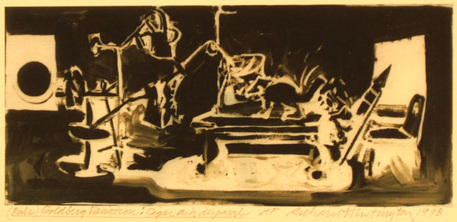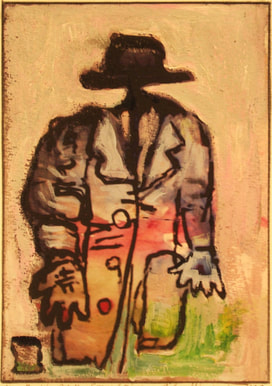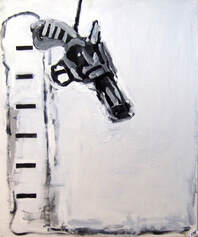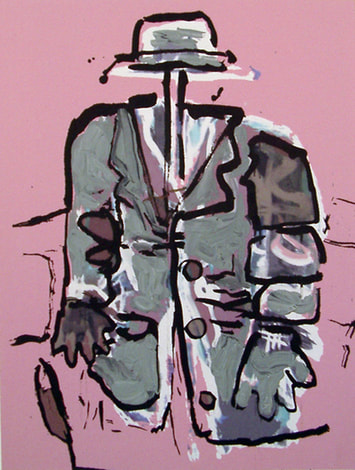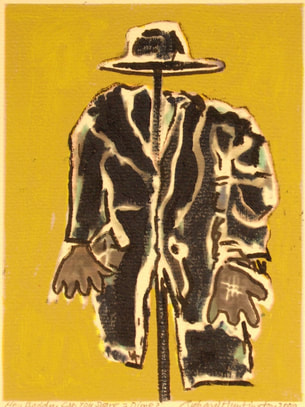(RUBE) GOLDBERG VARIATIONS

Rube Goldberg was an early 20th century cartoonist famous for his absurd solutions to common everyday problems--how to know when your slip is showing, how to "automatically" shut a screen door, how to self-propel a canoe (the secret is a hungry duck), how to instantly and effortlessly and instantly commit suicide when the stock market ticker tape falls below a certain level, and countless others. Typically Goldberg (1883-1970) would work in long horizontal panels showing a left-to-right sequence of outlandish events carried forward by an elaborate system of jerrybuilt mechanical devices that were, often as not, assisted by very accommodating animals and less often by humans who looked somewhat enslaved by the ridiculous contraptions they helped operate. He would enlist cannon balls, toy soldiers, bowling monkeys, tires, water buckets and every kind of pulley, rope, ramp, screw and gizmo he could find or invent.
"Rube Goldberg" is an adjective in the dictionary. It means anything that is "fantastically complicated" and "impractical." What it meant to me was a handy representation of human absurdity. My variations on his cartoons (the pun in the title refers to Bach's "Goldberg Variations") are treated as painterly subjects, that is, images that could generate, with the right inflection, strong emotions, perhaps even tragic feelings. When in one cartoon a little tin soldier marches forward and falls into a waiting noose and is hanged simply to shut a screen door, I want my black setting and rough brushwork to make it seem comic and tragic at once, an expression of how humans hang at the abyss but nevertheless keep telling stories, make puns and, whenever it's even marginally possible, laugh. I liked the paradox of it: that I might possibly build a genuine expressive image from the most absurd and hilarious concoctions to ever come out of a comic imagination.
Goldberg's crazy machines are genius but his drawings are, in my view, merely functional comic strip renditions. What I did, or hope I did, was enliven the originals by infusing them with contemporary art ideas. Each one pays homage to a modernist painting style, be it Ashille Gorky's lyrical line work, Willem De Kooning's whiplash form or the black and white compositions of Franz Kline and Robert Motherwell. They may hint at some loose-boned form of surrealism or perhaps a kind of deformed realism, but they always offer a convincing conjunction of subject-matter and the formal arrangement of Goldberg's elements. In some works I take off on one of Goldberg's single figures--raggedy, impoverished individuals (or in one case not a human at all, but a scarecrow)--and put them through the "high art" mill. Blue Scarecrow With Cannon Ball, a brushy acrylic on canvas, 2001, about 5-feet high, (above) is an example. For comparison, see the smaller "hobos" looking for a hand-out at the bottom of this page.
"Rube Goldberg" is an adjective in the dictionary. It means anything that is "fantastically complicated" and "impractical." What it meant to me was a handy representation of human absurdity. My variations on his cartoons (the pun in the title refers to Bach's "Goldberg Variations") are treated as painterly subjects, that is, images that could generate, with the right inflection, strong emotions, perhaps even tragic feelings. When in one cartoon a little tin soldier marches forward and falls into a waiting noose and is hanged simply to shut a screen door, I want my black setting and rough brushwork to make it seem comic and tragic at once, an expression of how humans hang at the abyss but nevertheless keep telling stories, make puns and, whenever it's even marginally possible, laugh. I liked the paradox of it: that I might possibly build a genuine expressive image from the most absurd and hilarious concoctions to ever come out of a comic imagination.
Goldberg's crazy machines are genius but his drawings are, in my view, merely functional comic strip renditions. What I did, or hope I did, was enliven the originals by infusing them with contemporary art ideas. Each one pays homage to a modernist painting style, be it Ashille Gorky's lyrical line work, Willem De Kooning's whiplash form or the black and white compositions of Franz Kline and Robert Motherwell. They may hint at some loose-boned form of surrealism or perhaps a kind of deformed realism, but they always offer a convincing conjunction of subject-matter and the formal arrangement of Goldberg's elements. In some works I take off on one of Goldberg's single figures--raggedy, impoverished individuals (or in one case not a human at all, but a scarecrow)--and put them through the "high art" mill. Blue Scarecrow With Cannon Ball, a brushy acrylic on canvas, 2001, about 5-feet high, (above) is an example. For comparison, see the smaller "hobos" looking for a hand-out at the bottom of this page.
